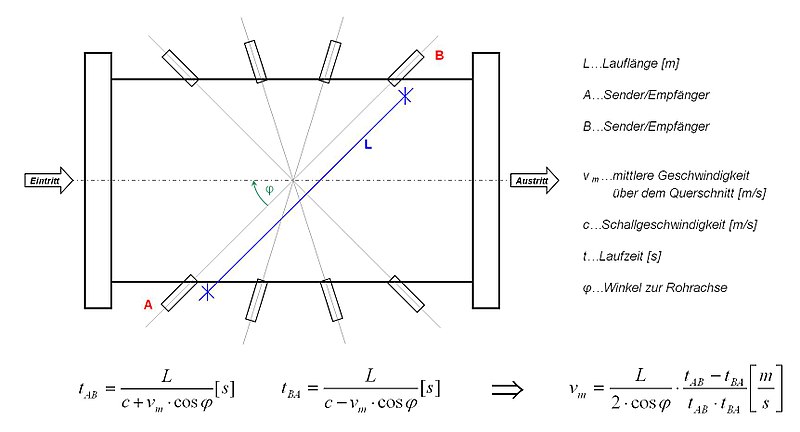Ultrasonic meter
An ultrasonic gas meter is a gas meter for measuring the gas volume flow by measuring the transit time.
functionality
The runtime measurement is based on the following physical effect:
- When the flow speed of a fluid changes, the transmission speed of the sound waves emitted in the fluid also changes.
Two ultrasonic measuring heads (transmitter and receiver at the same time) lying on a common line of action alternately send and receive ultrasonic pulses. Measurements are made with and against the direction of flow, which results in different propagation times for the sound. The speed of the fluid can then be calculated by measuring the time difference between the transit times.
The determination of the operating volume flow is finally based on the following equation
: Volume flow in the operating state in [m³ / s] : Average flow velocity in [m / s] : Cross section at the point in [m²]
For comparison purposes, the thermal equation of state of ideal gases can be used to convert the operating volume flow to the standard state .
Advantages of the procedure
- no mechanically moving parts,
- no parts protruding into the flow, therefore almost no pressure loss during flow,
- Fluctuations in the flow can be registered very precisely, the influence of errors on the quantity measurement is reduced to a minimum,
- Due to its symmetrical structure, the meter can be operated bidirectionally , which can lead to cost savings. (For example, only one common line is required for feed-in and feed-out in storage operation.)
disadvantage
- The measurement process requires external energy (electrical energy).
Areas of application
This type of meter is already being used in the large-scale consumption area, other areas will follow.





